Dacia introduces enhanced Spring with LFP battery and a Kei Car concept
With the Spring, launched in 2021, Dacia wanted one thing above all else: to offer European customers an affordable entry point into e-mobility that was in line with the brand image. However, the model, manufactured by cooperation partner Dongfeng in Wuhan, China, required buyers to make quite a few compromises in the early years – not only in terms of quality, but also in terms of comfort, performance and electric car-specific technology.
With a maximum range of 225 kilometres, the Spring was not exactly designed for long distances. A fast-charging function was only available as an option for the top-of-the-range version, and even then, the maximum charging power was only 30 kW. The basic drive version of the tiny car takes almost 20 seconds to reach 100 kph.
In spring 2024, Renault’s low-budget subsidiary presented an extensive facelift that was almost unrecognisable visually and also represented a major step forward in terms of quality. As part of the revamp, Dacia also lowered the entry-level price from €22,750 to €16,900. However, this did not change the modest performance data and the virtually non-existent long-distance suitability.
In recent years, this may have been acceptable in the cost-sensitive entry-level segment, but in the A and B segments, more and more fully-fledged competitor models have gradually come onto the market. A Hyundai Inster, for example, is quite a bit more expensive, but it also offers significantly more car for your money.
Extra power is particularly noticeable during acceleration
Dacia emphasises that its only pure electric model is still selling well, with 17,000 units sold so far this year. However, the Romanian brand is now responding to growing competitive pressure and has unveiled a comprehensive technical update for the Spring, which is not expected to affect prices.
The most noticeable changes concern the drive system. Dacia is phasing out the previous 33 and 48 kW drives and replacing them with two new units delivering 52 and 75 kW, respectively. Dacia has not yet published acceleration figures from zero to 100 kph for the two drives, but the extra power is expected to have a particularly positive effect on mid-range acceleration. According to the manufacturer, the new entry-level version with 52 kW accelerates from 80 to 120 kph in 10.3 seconds, whereas the previous base version took an outdated 26.2 seconds to do so.
When the more powerful 75 kW drive system, which is only available in combination with the top-of-the-range Extreme trim, is fitted to the front axle, the figure is reduced to 6.9 seconds. This makes the new top-of-the-range version 7.1 seconds faster than the previous Spring with 48 kW in this discipline, meaning that the time has been more than halved. This means that the refreshed Spring can be driven confidently onto the motorway – but you still wouldn’t want to cover longer distances with it, as the maximum WLTP range remains modest at 225 kilometres.
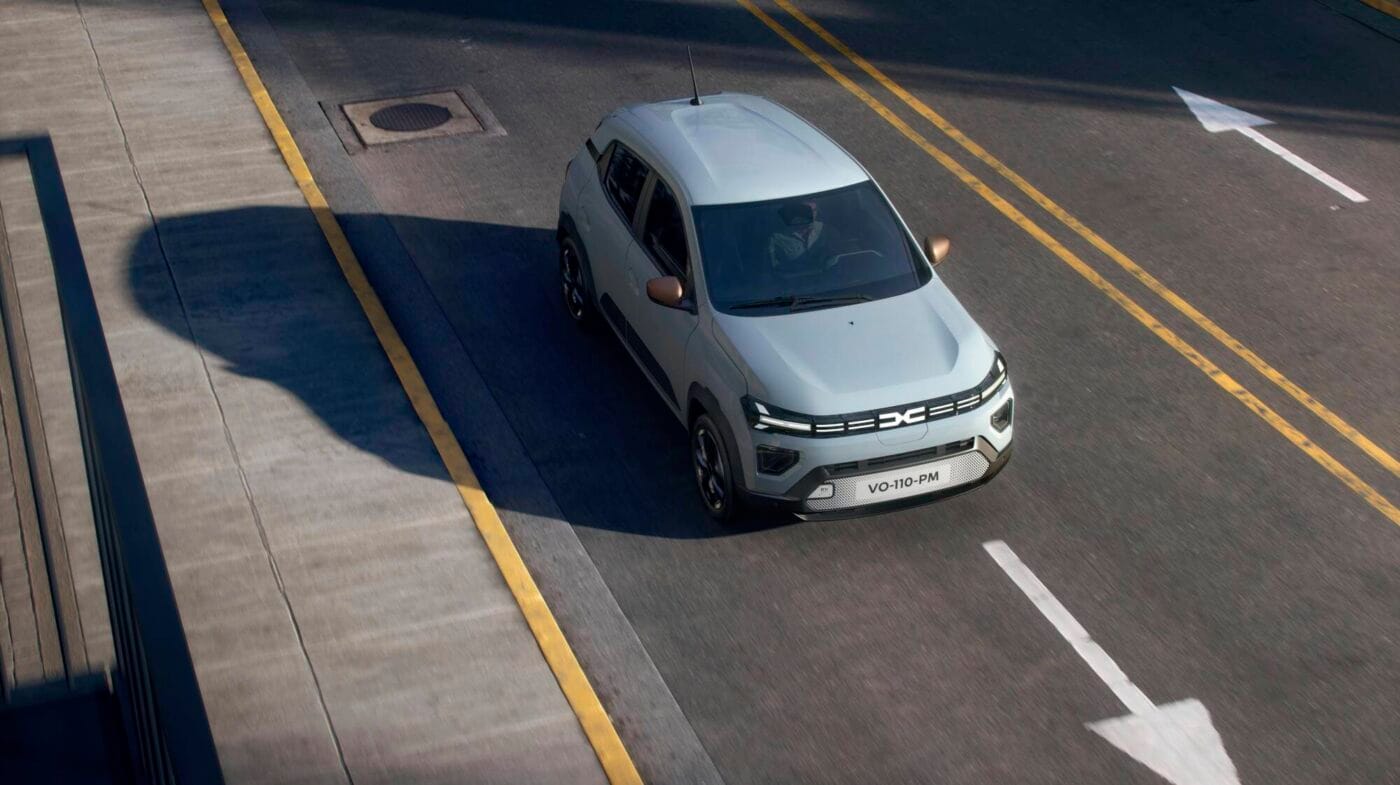
To this end, Dacia has increased the maximum DC charging power from 30 to 40 kW as part of the redesign. Ideally, charging from 20 to 80 per cent should take 29 minutes. That would be around a quarter of an hour less than before. With alternating current, the maximum charging power is 7 kW. At urban charging stations or at home using a wall box, the new battery can be charged from 20 to 100 per cent in 3 hours and 20 minutes. Previously, this process took a full four hours.
The Spring’s new battery is responsible for this improvement. The small car is the first model from the Renault Group to feature an LFP battery in the underbody, with a capacity of 24.3 kWh. This is not only supposed to charge faster, but also be more durable, safer and, above all, cheaper. It has been positioned centrally in a reinforced housing, which improves weight distribution and increases rigidity.
Handling is set to become safer
However, the technical changes do not only affect the battery and the platform itself. Dacia has also optimised the brake booster, which should shorten the braking distance in an emergency. In addition, the Spring now comes with a stabiliser bar as standard for the first time, which increases stability when cornering. The manufacturer pursued the same goal when tuning the shock absorbers and springs.
The energy content of the new LFP battery is slightly lower than that of the previous NMC battery. The fact that the range has remained the same is due to fine-tuning in terms of aerodynamics. New panelling is designed to reduce air turbulence, while a small rear spoiler minimises turbulence above the tailgate. This has significantly reduced the SCx value, which is the product of the drag coefficient and the frontal area. According to Dacia, it has fallen from 0.745 to 0.660 square metres.
However, the revamped Spring is not the only electric innovation from Dacia. On 6 October, the brand also unveiled the ‘Hipster’ concept car. According to those responsible, the minimalist vehicle is intended to give a glimpse of the ‘people’s car’ of the future and, with its reduction to the essentials, symbolise Dacia’s brand values.
“This is the most Dacia-esque project I have ever worked on. It has the same societal impact as the Logan did 20 years ago. And it involves inventing something that does not exist today,” said Romain Gauvin, who is responsible for the design of concept cars and innovative design studies at the Renault subsidiary.
The Hipster is only three metres long, 1.53 metres high and 1.55 metres wide. Thanks to its boxy proportions, virtually non-existent overhangs and vertical windows, it offers four full-size seats and plenty of luggage space on this comparatively tiny footprint. Depending on the configuration, the boot can hold between 70 and 500 litres. The latter value is available when the rear seat is flat.
The tailgate is divided into two parts and opens up to reveal a huge boot space – the lower part folds down like a pick-up truck, which should make loading easier. When the tailgate is raised, the rear lights at the top remain in position. The rear window also serves as a cover for the lights, reducing the number of components and thus also production costs.
A European kei car
Essentially, the cube-shaped small car is a European interpretation of the kei cars popular in Japan, which are also extremely compact yet surprisingly spacious. Interestingly, John Elkann, chairman of the supervisory board of Renault’s competitor Stellantis, recently emphasised in an interview the need for Kei Ca, like concepts to ensure affordable individual mobility in Europe in the electric age. The manager mused about the creation of a new vehicle class for small and affordable electric vehicles. Renault itself is also calling for the EU regulations for small electric cars to be slimmed down, as the high requirements keep new car prices comparatively high.
The Dacia Hipster is intended to be an alternative to the current electric cars, which are crammed with technology and are often not only comparatively expensive but also heavy. The concept car is expected to be around 20 per cent lighter than a Dacia Spring, which weighs just over a tonne when empty. By doing away with unnecessary bells and whistles, not only can costs be kept low, but also the carbon footprint. According to Dacia, the Hipster’s footprint is expected to be only about half that of the most climate-friendly electric cars currently on the market.
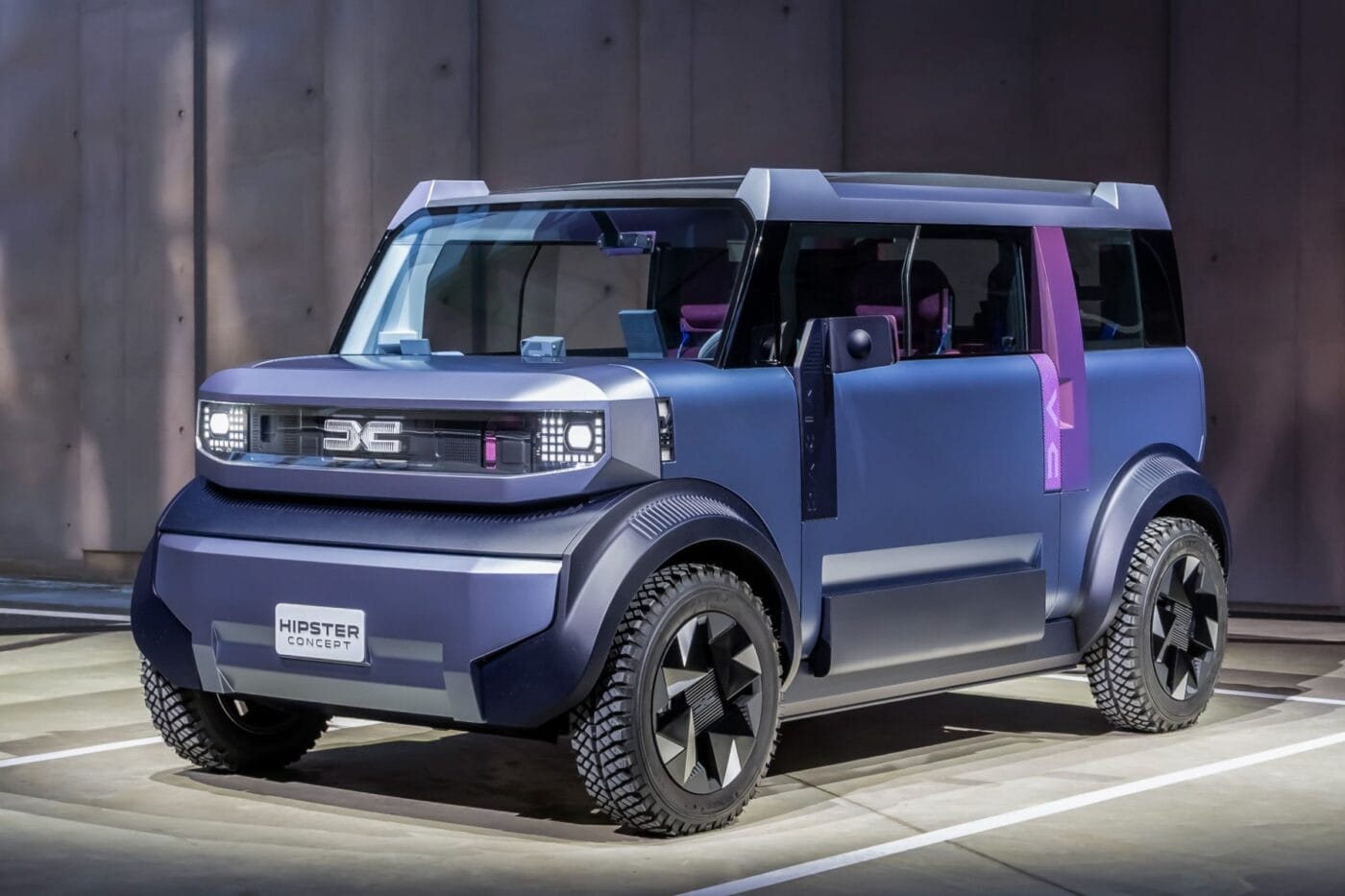
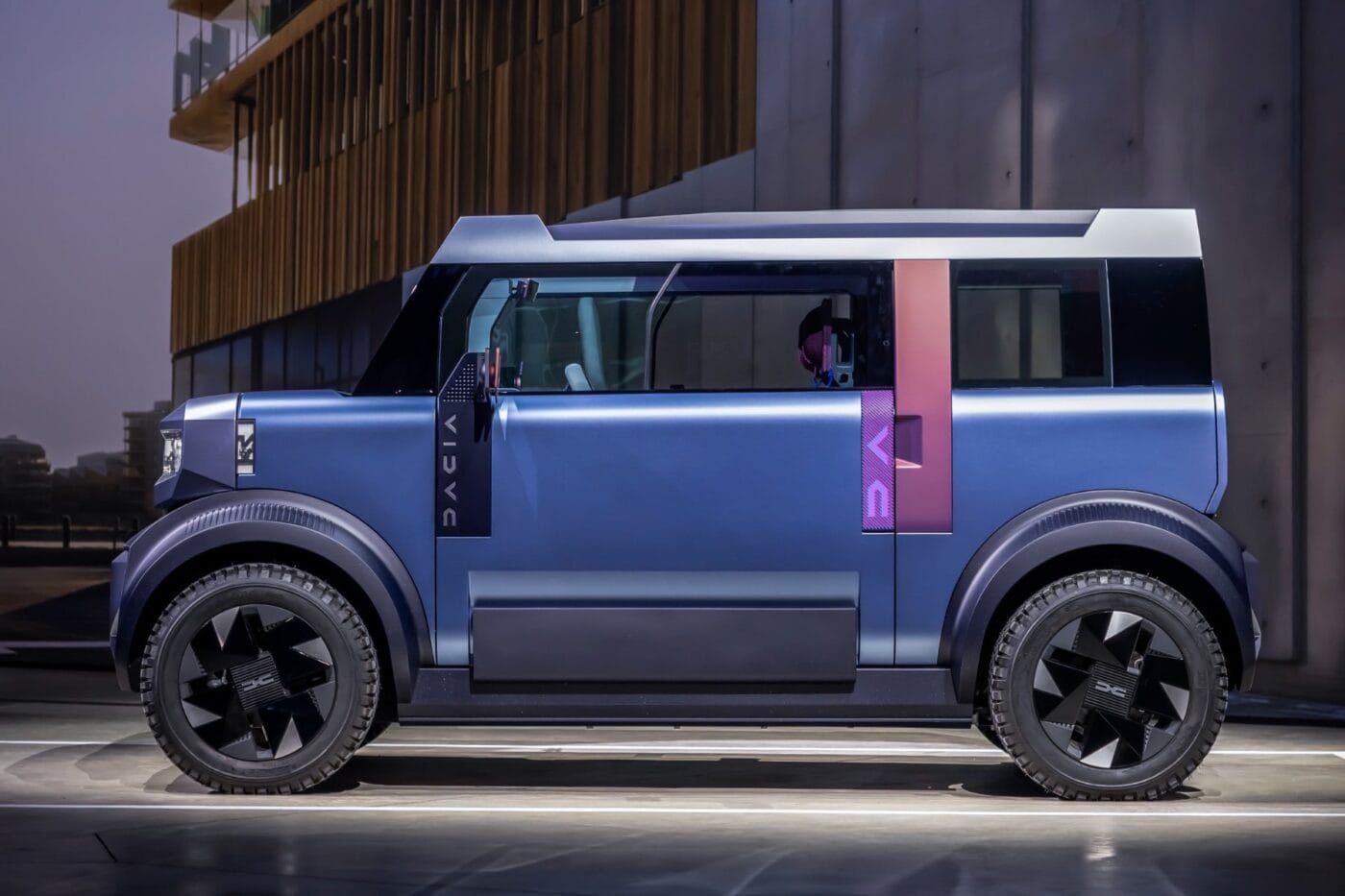
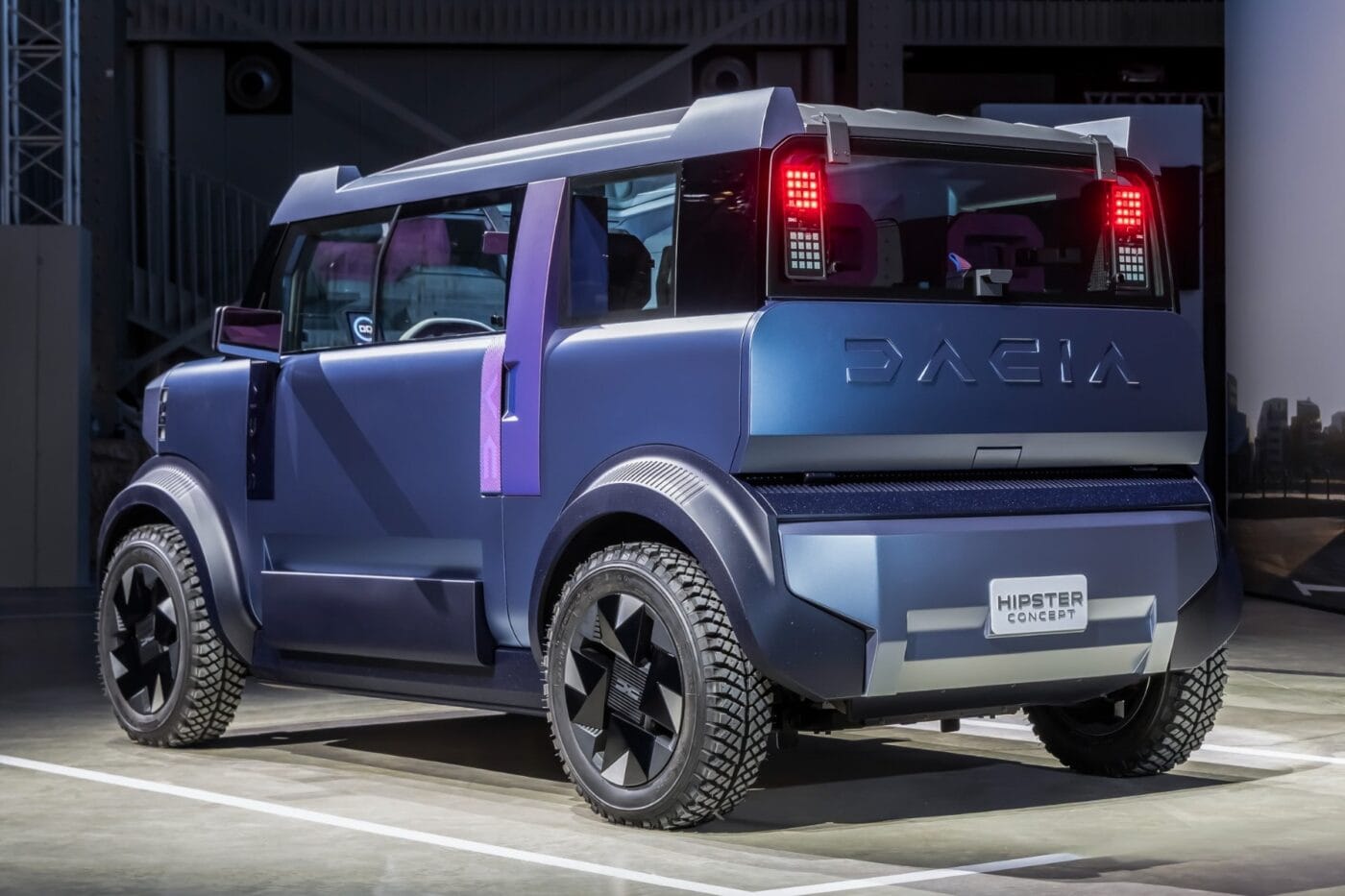
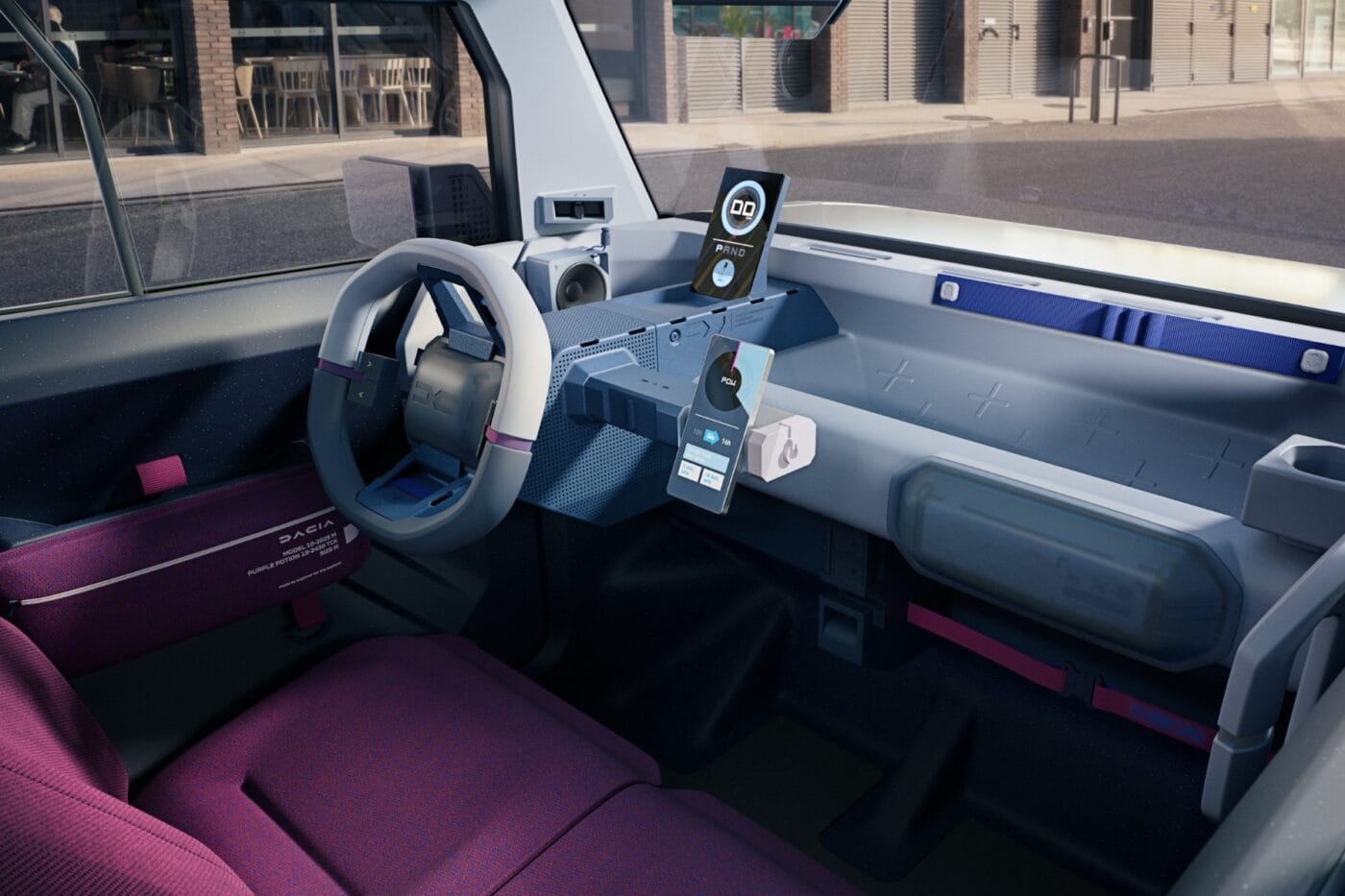
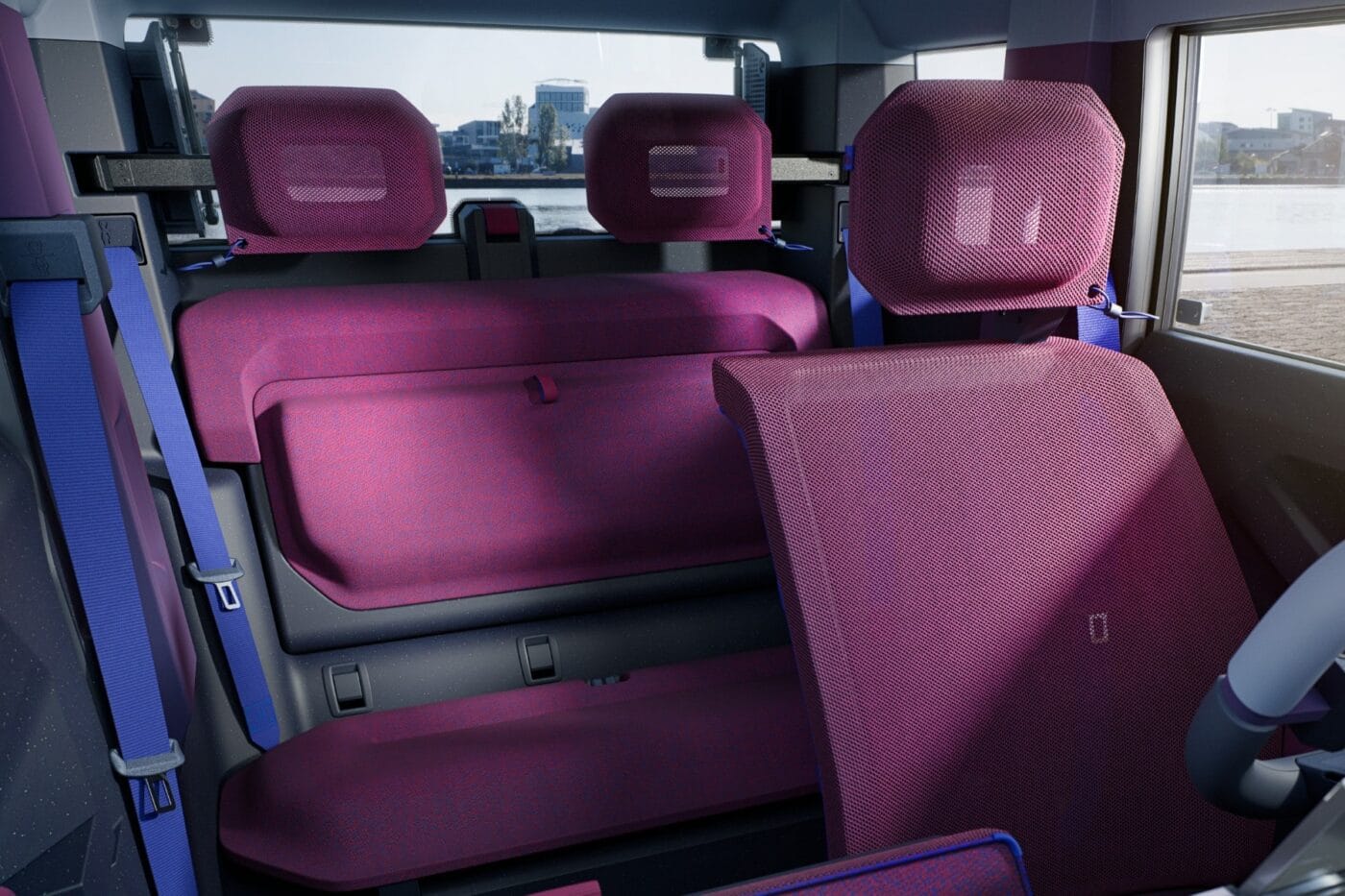
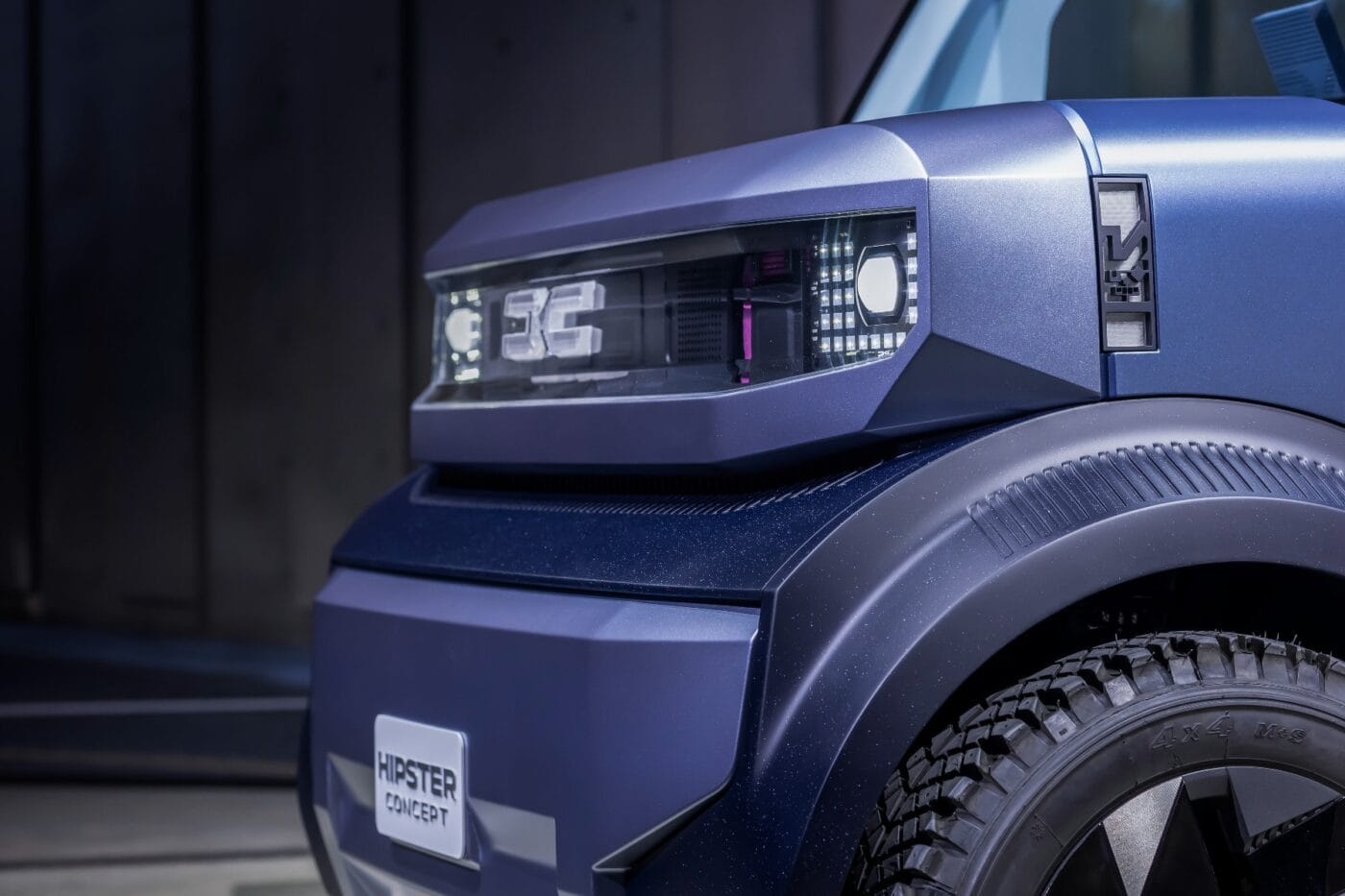
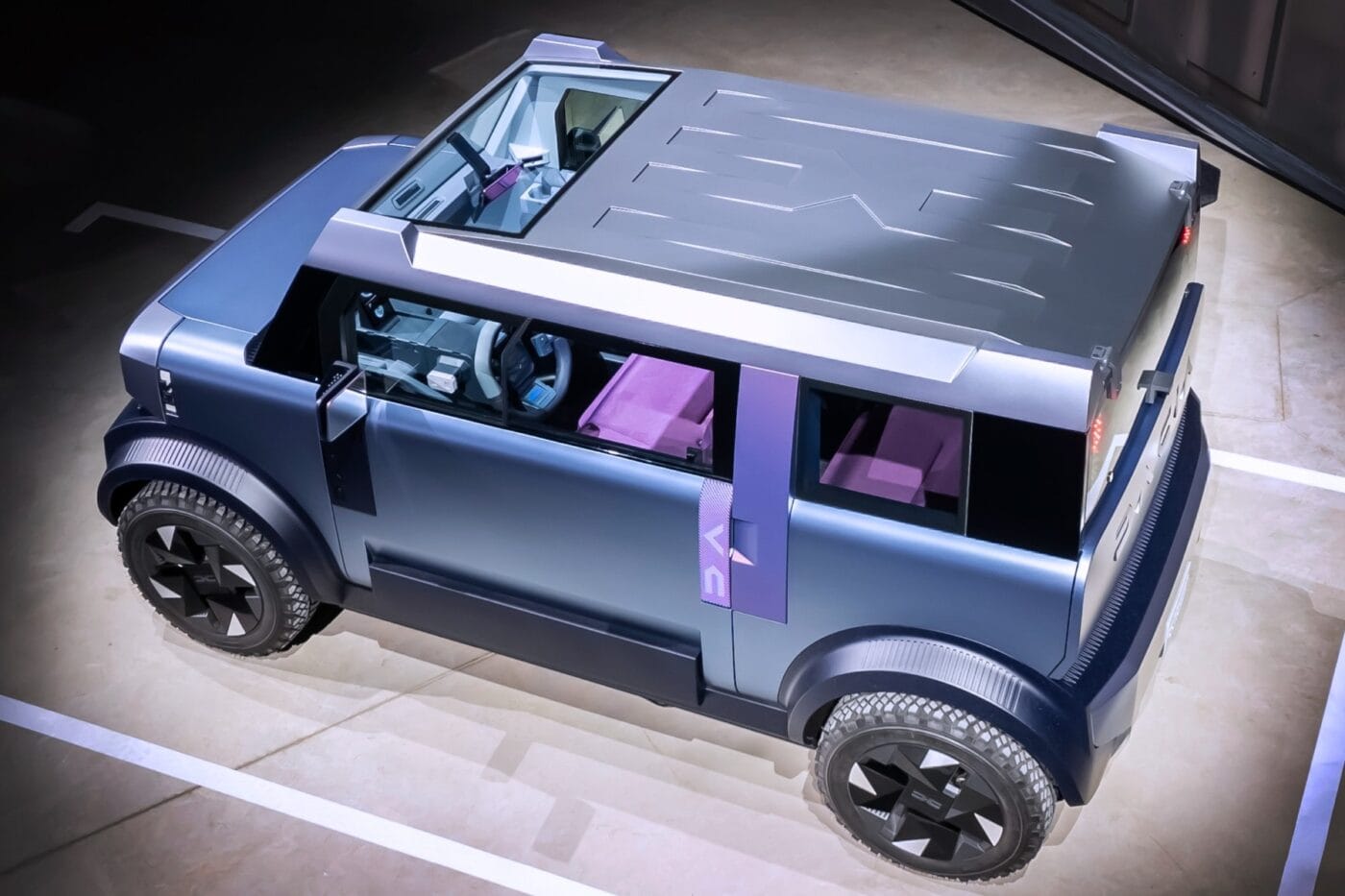
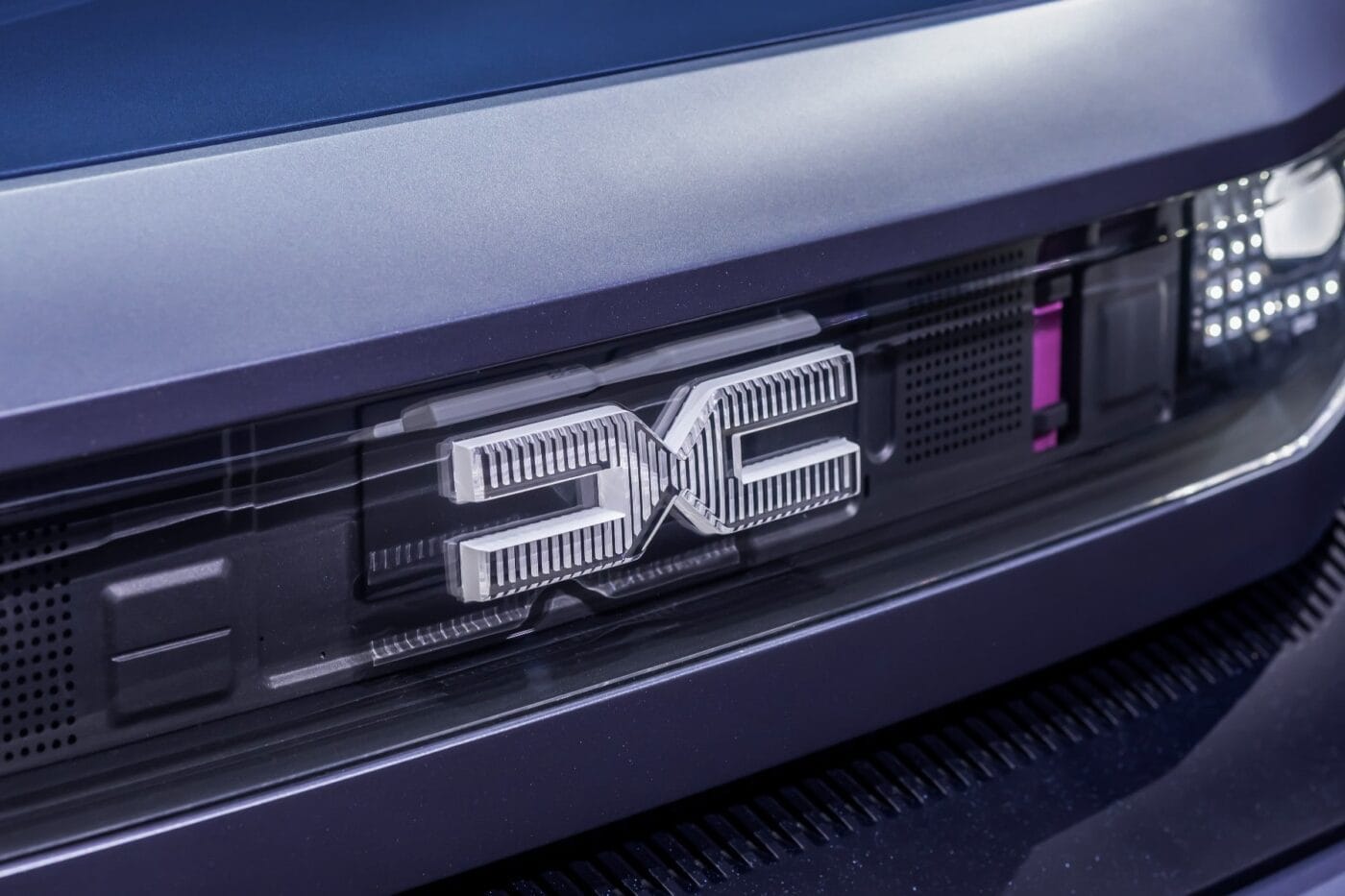
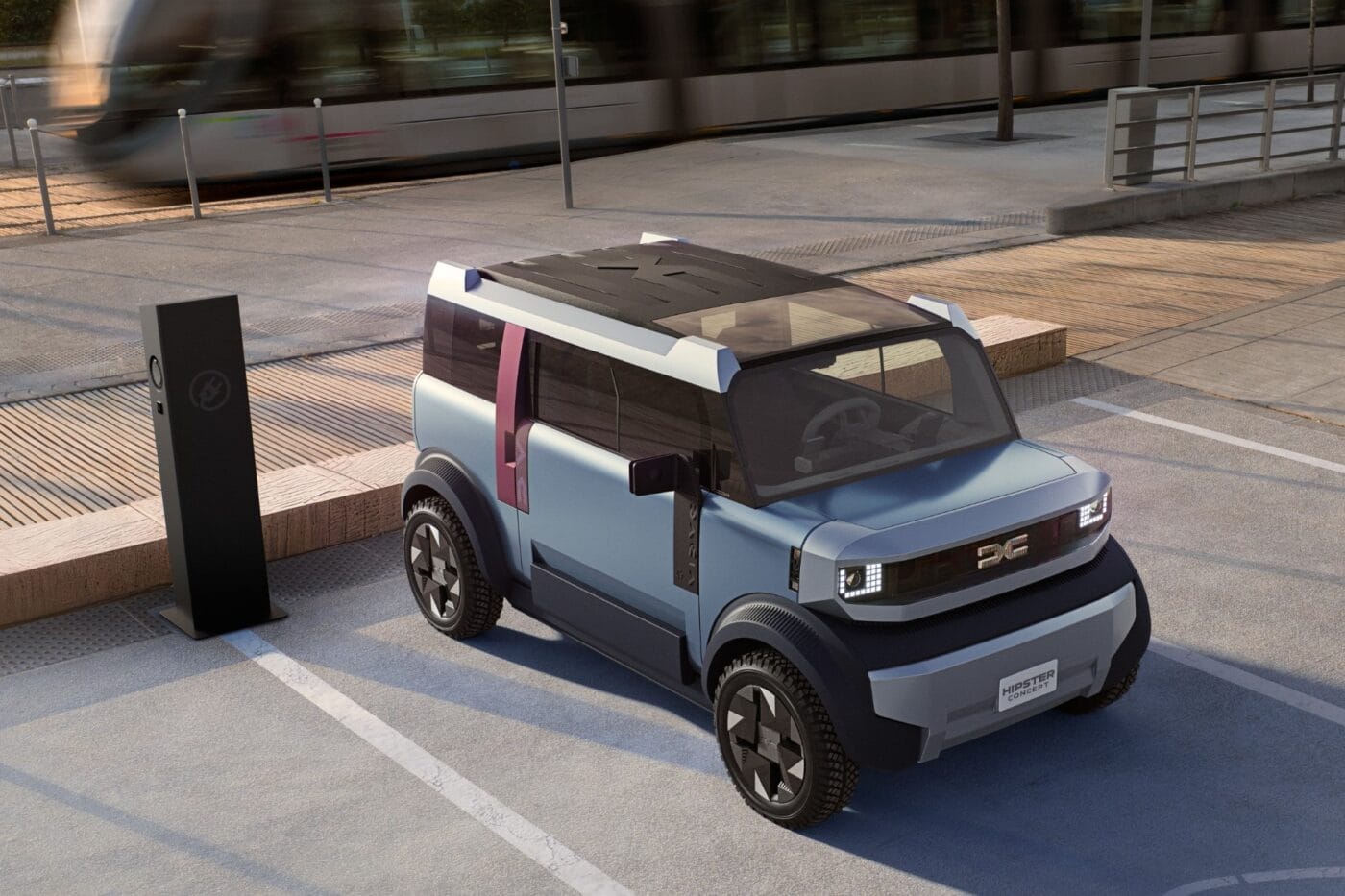
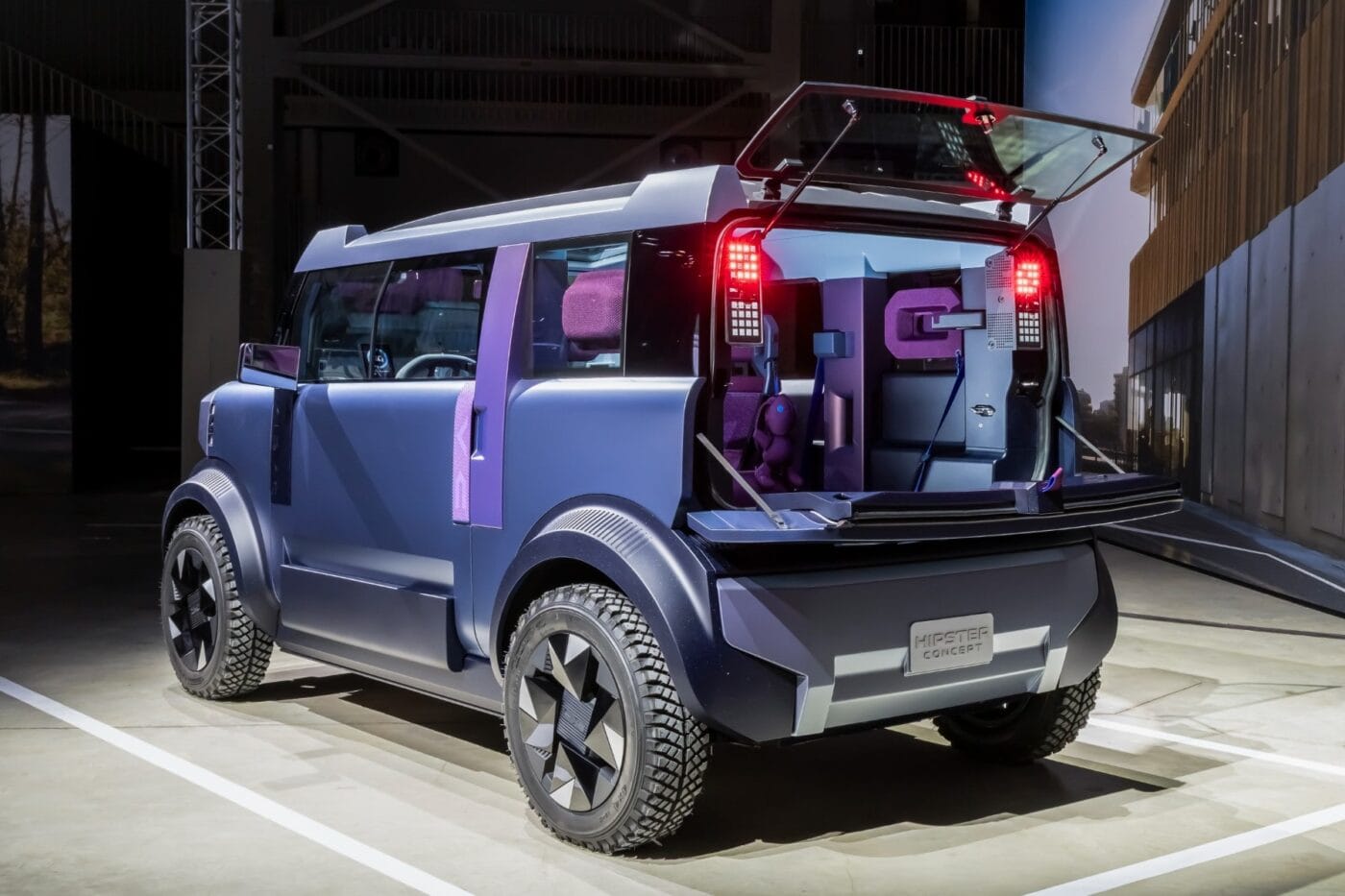
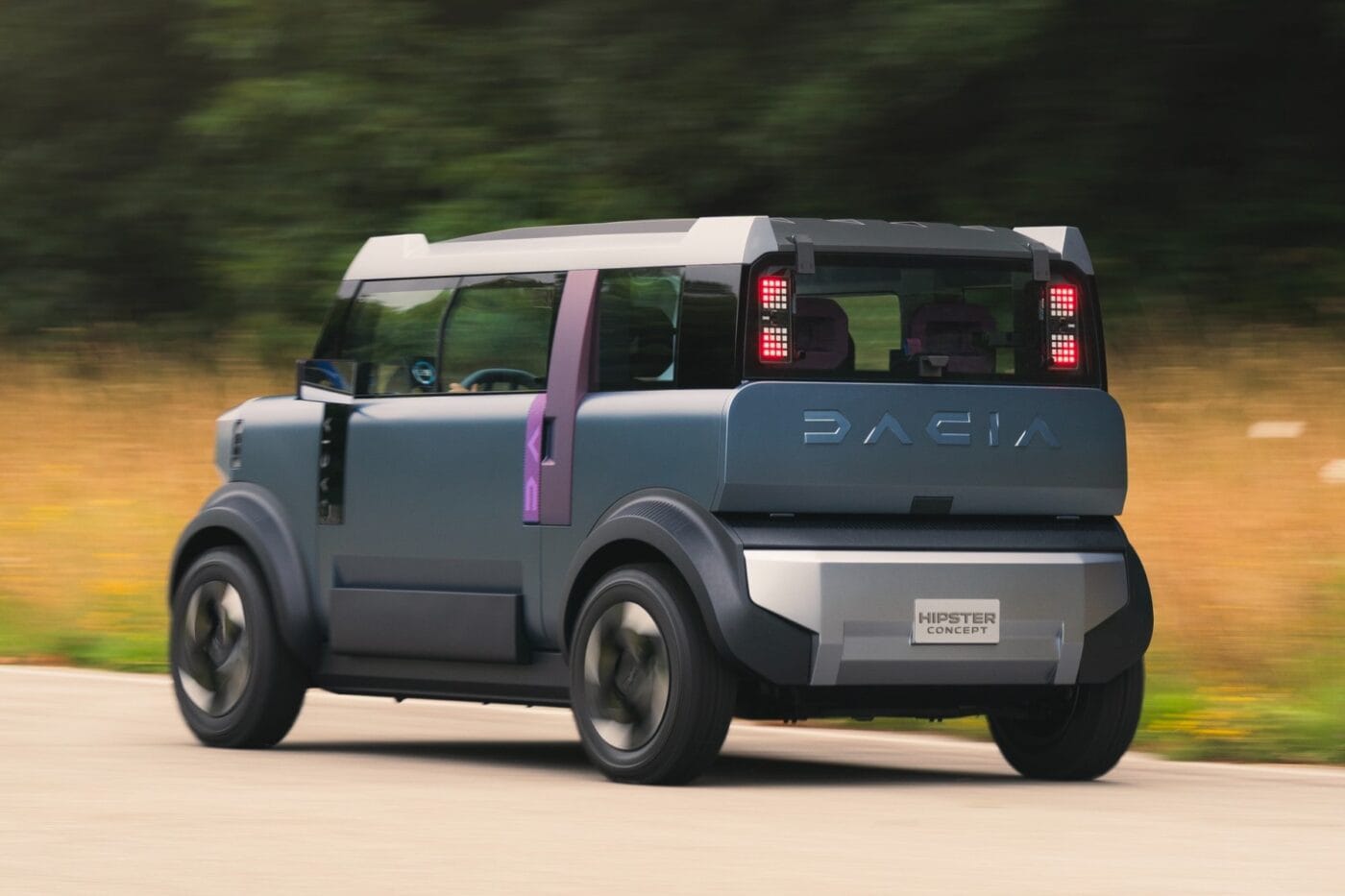
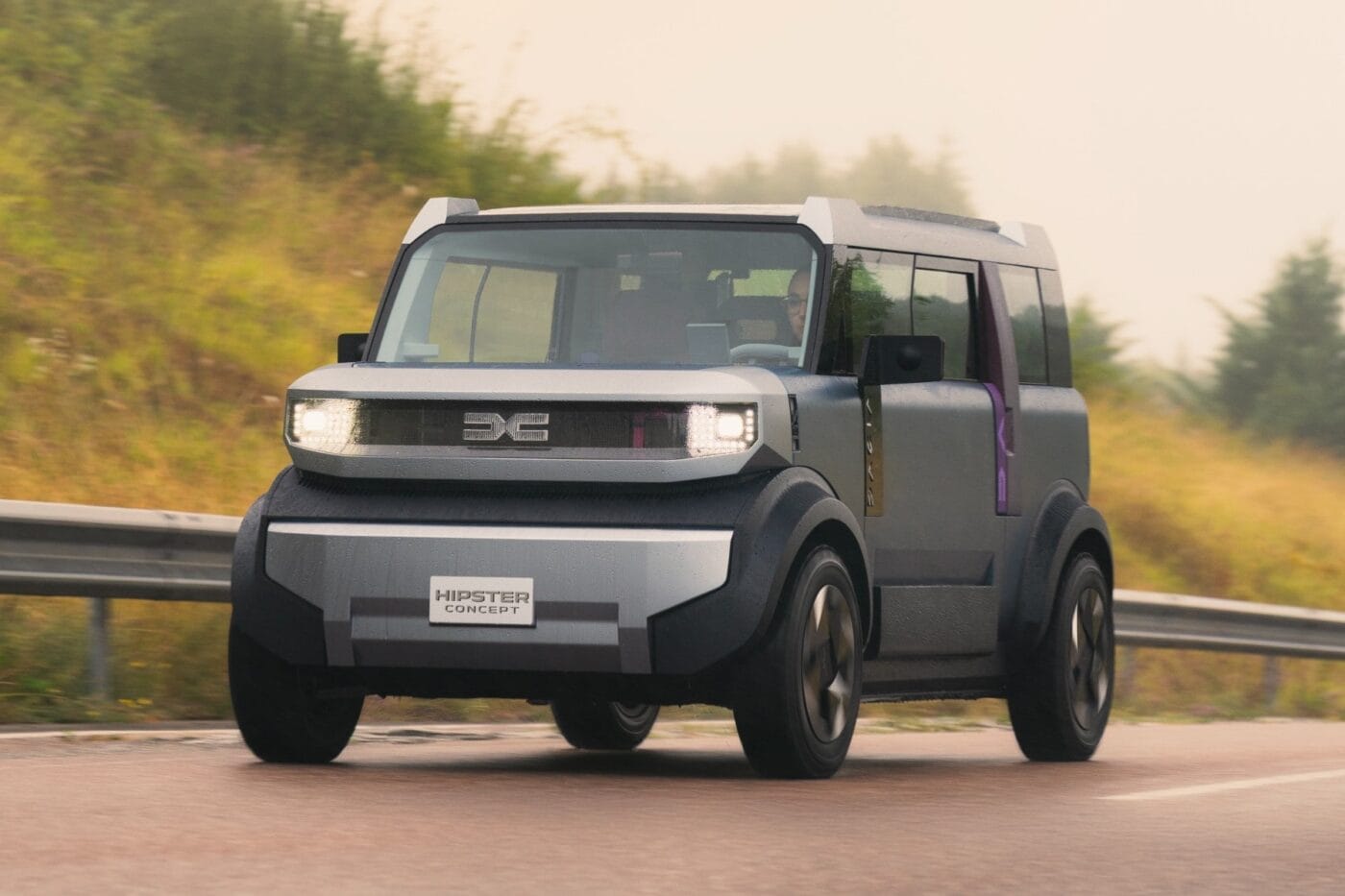
The cockpit is not dominated by a large infotainment touchscreen – instead, the dashboard has been deliberately kept minimalistic. The Romanian car manufacturer is consistently pursuing its ‘bring your own device’ philosophy – the smartphone not only serves as the key to the vehicle, but also becomes the navigation and infotainment screen via a docking station. A simple Bluetooth speaker serves as the sound system, while the side windows slide rather than being lowered electrically. The classic door handles have been replaced by loops.
One major difference between the Hipster and other electric light vehicles already on the market, such as the Opel Rocks, is the Hipster’s standard airbags, which provide a certain degree of passive safety. The front seats have been combined into a bench seat and have a visible frame covered with fabric. Although it is over a metre shorter than the classic Sandero small car, the Hipster is said to offer just as much space and comfort in the front row as its big brother. The study could well be interpreted as a preview of an even cheaper Spring successor.
dacia.com (Spring), dacia.com (Hipster)
This article was first published by Elias Holdenried for electrive’s German edition



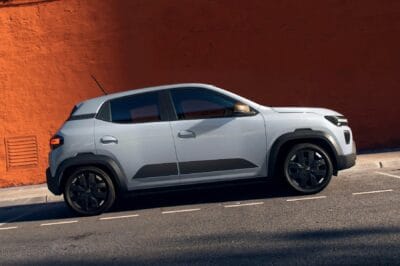
0 Comments